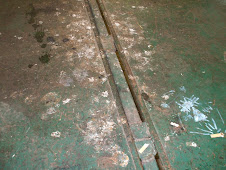The presence of feral pigeons and most especially their faeces represents a potential health hazard to employees and to the general public. This is particularly so when large accumulations of filth build up inside a building. They are commonly carriers of a number of serious human diseases including salmonellosis, psittacosis and pseudo-tuberculosis. Their faeces provide an ideal environment for the growth of the organisms causing such diseases as histoplasmosis, aspergillosis, cryptococcis and listeriosis. Although the risk of infection from pigeons may be relatively low, the diseases are severe and may be life threatening. Pigeon faeces represent a health and safety hazard for employees who have to remove them or work in their vicinity. They are thus a special problem in the renovation of buildings where large accumulations have been allowed to build-up. Dealing with such accumulations can be expensive and time consuming because of the protective equipment and procedures that may be required. Health and safety problems are also caused by the build up of faeces due to the slippery and unsafe footing it provides on walkways and ledges hindering proper maintenance
http://www.handr.co.uk/literature/feral_pigeons.htm
Other councils apart from Dacorum seem to take a more robust approach !!
http://www.wyreforestdc.gov.uk/ccm/content/clacs/street-scene-services/feral-pigeon.en;jsessionid=CB832AE7BBEC7598D0F8D5BA711DFAF4
http://www.tameside.gov.uk/pestcontrol/pigeons/infosheet
How Do Birds Pass on the Infection to Humans?
Humans can become infected with Chlamydia psittaci ( Newcastle Disesae ) by breathing in the organism when the urine, respiratory secretion, or dried faeces of infected birds is dispersed in the air as very fine droplets or dust particles.
All birds, both domestic and wild. Most susceptible are domestic chickens, turkeys, pigeons and parrots. Milder disease is seen in ducks, geese, pheasant, quails, guinea fowls and canaries.
Easily spreads by contact with infected or diseased birds. The virus is excreted in manure and is expired into the air. Other sources of infection are contaminated equipment, carcasses, water, food and clothing
http://www2.dpi.qld.gov.au/health/3950.html
http://www.aberdeenshire.gov.uk/safety/legislation/psittacosis.asp
Thursday, 28 August 2008
Subscribe to:
Post Comments (Atom)




No comments:
Post a Comment